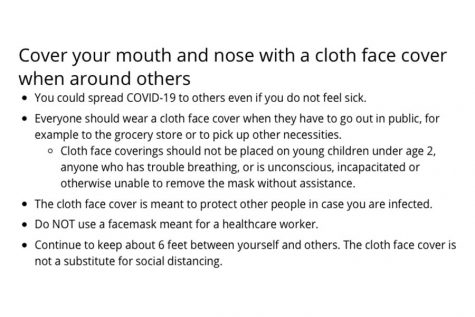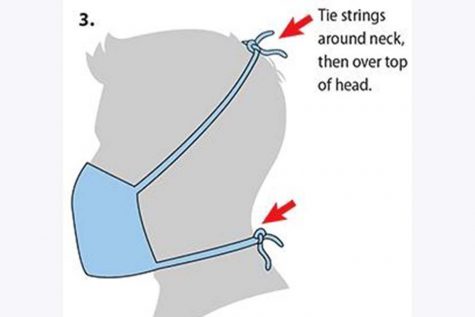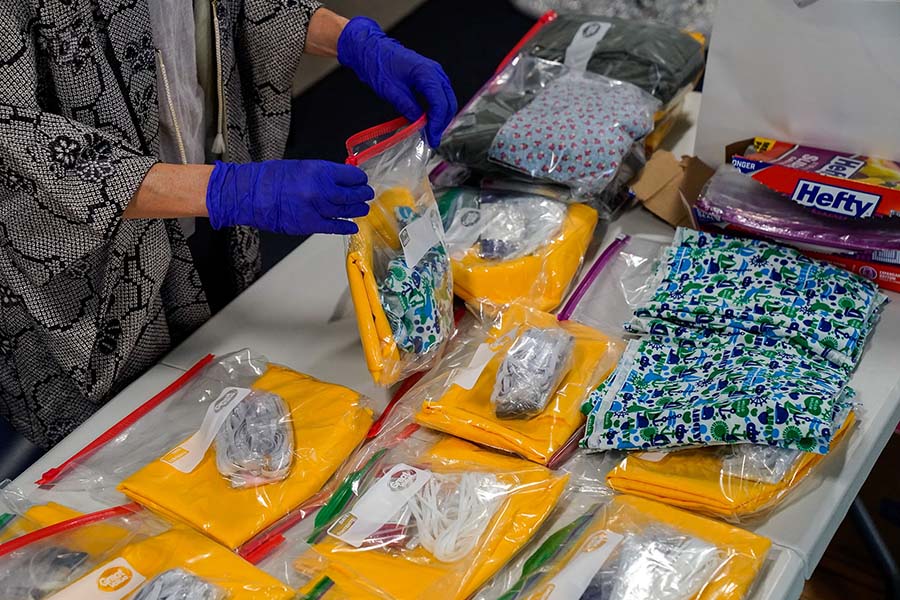Masking the Spread of Coronavirus
Wearing a face mask in public, in addition to social distancing, is imperative in slowing the spread of COVID-19.
PHOTO | MCT Campus
Salette Corpuz assembles kits as the Costume Designers Guild rushes to make face masks on April 3, 2020, in Burbank, Calif. (Kent Nishimura/Los Angeles Times/TNS)
Before the world was introduced to COVID-19, wearing a face mask was reserved for healthcare professionals and the occasional fashion trendsetter. Now, amid a global pandemic, the average person is more likely than not to be seen wearing a face mask in any public setting.
COVID-19, a novel respiratory virus that was first recorded in December 2019, has caused an international panic, especially since many of those that test positive are asymptomatic and can spread the virus without knowing it. The Center for Disease Control has recommended guidelines to prevent the spread of the virus, including wearing a mask.
But everyone wearing a mask alone is not enough to keep people safe. All people, including those that are asymptomatic, should wear a non-medical grade mask in public in order to help slow the spread of the virus. Still, it should not be substituted for social distancing or maintaining proper sanitation.
Wearing a mask is crucial to not only protecting the wearer of the mask, but also protecting those around them. Coronavirus is spread primarily through droplets of saliva or discharge from the nose when an infected person coughs or sneezes, according to the World Health Organization. If an infected person, even an asymptomatic one, does not wear a mask in public and coughs, they spread the virus through the air or on a surface—potentially putting masses of people at risk. However, if people wear a mask, there is a significantly lowered risk of spreading coronavirus to a public place.

Although it is important to be wearing a mask in public, non-healthcare professionals should not be wearing medical-grade masks. There is a world-wide shortage of N-95 respirator masks used by medical professionals because non-medical personnel began hoarding them after COVID-19 was first identified as a public health risk, according to the Food and Drug Administration. These masks must be preserved for use in hospitals and doctor’s offices, as those employed in healthcare are at a much higher risk of contracting and spreading the virus and therefore, must be protected by surgical-grade masks. The CDC recommends that people wear cloth face coverings when out in public instead.
Despite the fact that wearing a mask significantly lowers the risk of spreading COVID-19, it is not to be used in place of other preventative guidelines, especially frequent hand washing and social distancing practices. Wearing a mask only prevents the wearer from spreading the virus through the nose and mouth. It does not protect against contracting the virus through touching an infected surface or touching an infected person. The mask can only do so much.

An illustration by the CDC of how to make a face mask. (Illustration by CDC)
The CDC guidelines state that social distancing and staying at home as much as possible is the best way to slow the spread of the virus. Wearing a mask and then unnecessarily breaking stay-at-home orders is ineffective and contradictory.
Wearing a mask is crucial to stopping the spread of coronavirus, especially for essential workers. Everyone must wear one in a public setting if they care about keeping the community safe and healthy in the coming weeks. People can buy them (online, of course) or make them at home. The CDC offers instructions on their website for easy, sewn or not sewn cloth face coverings. There is no excuse for not wearing one. But it is not enough to just wear a mask. People have to wash their hands, stay at home and social distance, along with wearing a mask if the world is to ever stop the spread of coronavirus.
Masks on, everyone!



